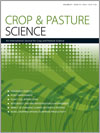CP16027Interactions between water and nitrogen in Australian cropping systems: physiological, agronomic, economic, breeding and modelling perspectives
This paper reviews the interactions between water and nitrogen from physiological, agronomic, economic, breeding and modelling perspectives. Our primary focus is wheat, the main crop in Australia; forage crops, sorghum and legumes, are considered where relevant aspects of water–nitrogen interactions have been advanced. The paper concludes with suggestions for future research on water-nitrogen interactions.




